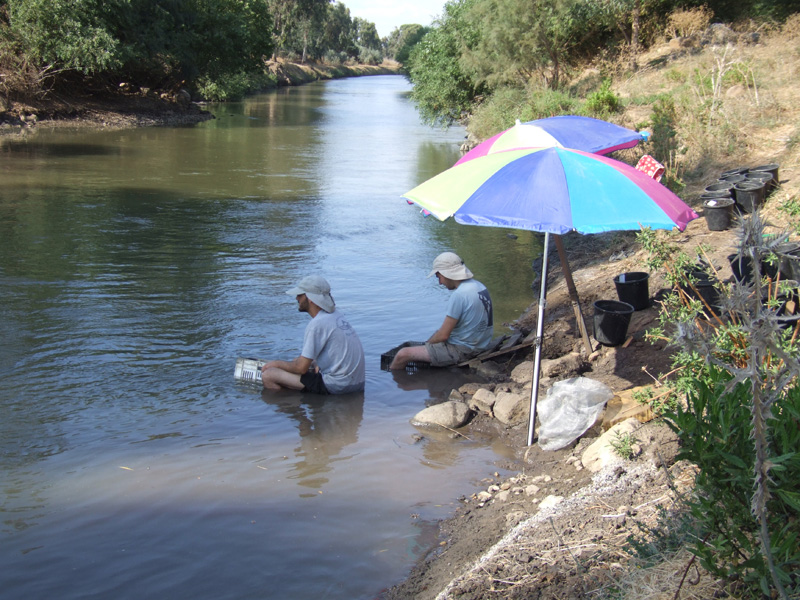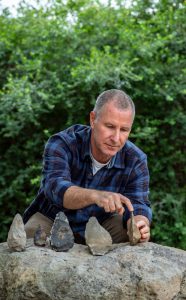
The Upper Jordan River Prehistory Web Site
The goals of this web site are to present the current data about the key archaeological sites of the Hula Valley and, in particular, the prehistoric sites located on the banks of the Upper Jordan River on its outflow south of the Hula Valley.
The site will house a digital database for the Upper Jordan River prehistoric sites, making this data available for researchers and students in open access format.
This web site is supported by an Israel Science Foundation Grant number 819 /17 – Epipaleolithic cultural sequence, chronology and subsistence in the Hula Basin granted to Prof. Gonen Sharon.

Gonen Sharon is a professor of prehistoric archaeology at Tel-Hai College and curator of the Upper Galilee Museum of Prehistory at Kibbutz Ma’ayan Barukh. Prof. Sharon’s interest in the prehistory of the Upper Jordan River began in 1995, when he was a staff member of the Gesher Benot Ya’aqov (GBY) excavation. Since then, he has gained archaeological experience spanning 750,000 years of early human occupation on the banks of the Upper Jordan River. He discovered the Middle Paleolithic site of Nahal Mahanayeem Outlet (NMO) and directed its eight-excavation season project from 2007-2014. NMO is a unique open-air, short-term task specific locality whose inhabitants left behind the tools with which they hunted and butchered giant cows 60,000 years ago. From 2015-2021, Prof. Sharon directed the Epipaleolithic Jorden River Dureijat (JRD) site excavation project, leading an international research team studying the uniquely preserved archaeological remains of 10,000 years of return visits to fish at the same spot. Together with the environmental proxies unearthed at JRD, these finds deepen our understanding of the factors prompting the shift from nomadic hunter-gatherer bands to settlement and agriculture.
Prof. Sharon’s primary interest remains the earliest periods of prehistory and questions of human evolution. In 2022, he returned to excavate the world-famous Acheulian site of Gesher Benot Ya’aqov. He is leading a large multidisciplinary research team applying the latest in laboratory technology to increase our knowledge of early human ancestors whose out-of-Africa route went through the Upper Jordan River Valley.
Since 2010, Prof. Sharon has been teaching at Tel-Hai College. He established the Tel-Hai Prehistory Laboratory where the prehistory of the Hula Valley is studied in the Hula Valley by local and international researchers and students. Prof. Sharon lives on Kibbutz Lehavot Habashan, a 10-minute drive from the Upper Jordan River sites.

